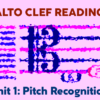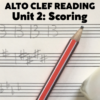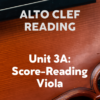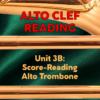Tuesday, 7 January, Part 2
After re-scoring the Keating yesterday, I sent the whole thing along with the Tubular Bells score to my MD, and got a good response back. That’s what matters, really. A thumbs-up at this point in my career is more about the relief of saving me from rewrites than it is about validation. We may need to change the last bar, or make an alternate ending choice right in the score. I get the feeling that this won’t be a big problem. Watching a live clip of Ronan Keating, I sensed that he was a pretty easy-going person. Best impression: he acknowledged the orchestra during their break. Good man. He’ll rock this arrangement no matter how it turns out.
After the intensity of the previous day’s scoring, it was a relief that the next necessary step was to create some preliminary scores for the next three songs on the roster: the two new ones from yesterday’s e-mail, and yet another Melanie C number, “Never Be The Same Again,” which I still hadn’t attended to. But after studying the new songs, “If That Were Me” (Mel C) and “Take a Minute” (Sharon Corr), I started on those scores first thing, as they were both potentially one-day projects at the speed I’m going, and I could do busy-work around them as needed. So I got those two done first, and quite a bit of “Never Be The Same Again” before running out of time. I am on holiday, so that means sometimes I can only put in 7 hours instead of 8 or 9. (Does this mean I’m turning into a workaholic? hmmm…)
Very cool e-mail from the MD at the end of the day. I’d mentioned off-handedly that I had some pretty strong ideas for Billy Ocean’s “The Tough Get Going” and Leo Sayer’s “More Than I Can Say” (having come to me when I evaluated all the songs a couple months ago). So the MD gave them to me, yussss! (millennial fist-pump) That’s awesome news. That puts my list of songs at 7, having committed to 10 or more. We’ll get there soon.
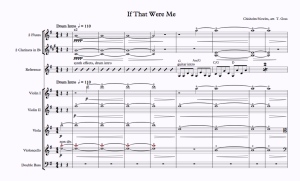
The next morning was one of those awesome events: waking at 3:30 a.m., fully rested, ready to roll by 4. Which is what I did, right into Mel C’s “If That Were Me”. There were some cool bits in this song that I hadn’t imagined scoring the day before when I was formatting the score and adding a reference staff with lyrics. At the start, there are some cool floaty synth bits, and I heard strings playing open harmonics, supported by pppp flute and clarinet pushing at the overtones.
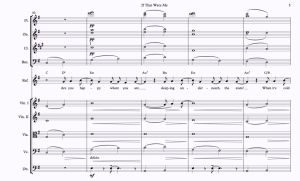
My MD said “lots of lush strings please!” so I took him at his word. The original studio track has bits of strings here and there, a chamber group rather than a full string orchestra, and some nice non-typical support passages. Of course I changed much of it, while keeping enough so that the artist would feel at home in her song (which she actually wrote, good on her). But to make things really lush, I scored a rather sneaky passage where the winds play above the strings at a much reduced comparative volume – pp to the strings’ mf – covering much of the inherent overtones in the lower part. The illusion here is that the strings are incredibly lush, far fatter than by themselves, and yet not doubled at pitch (which I’m doing often enough as it is, and trying to avoid).
The only problem I can see here is if the sound techs turn the winds up in an attempts to “get the mix right,” not realizing that they’re supposed to be swallowed in the texture. Sure, I could write a note to them and such, but amongst the thousands of things everyone has to think about, I’m sure it will be lower priority than I’d like. Still, I’ll risk it, because it would sound good either way (but like heaven the right way!).
Starting nice and early meant that the arrangement was easily finished by midday, and I could e-mail it to my MD and then finish the preliminaries for “Never Be The Same Again.” This was a bit tricky, as there are many versions of the song out there, both live and studio versions. The original single has a long rap break by a guest rapper. There’s also a pretty cool R&B/ska version of it with an over-the-top trombone solo. After studying everything pretty carefully, I came up with a plan of action, as detailed in my e-mail to the MD this afternoon:
1.) Flexibility. I’ve listened to three different versions now, and it seems that there’s a lot of flex in the different versions. One thing that’s certain, and it’s that Mel C prefers a little room. Her live versions have double and even triple choruses, and extra cycles of bars after each chorus (two progressions of Gm-Eb-Bb-D/F#, not one like on the single).
2.) Showcasing. Mel C likes to get the audience to sing and clap along. Also, APO has really phenomenal brass players. They can easily do big-band-type charts as well as classics and pop.
3.) Structure: Therefore, let’s try something like this:
Beat: Cut-time ska, one chord per bar.
Double intro (as live, 16 bars not 8 as on the single) with splashy bursts of brass chords.
Verse 1, Chorus 1, 8 bars ending groove (not 4 as on the single)
Verse 2, Chorus 2, 8 bars ending groove
Chorus 3 – Sing-along, drums and vocals only, band comes back on 8 bars ending groove
Chorus 4 (no ending groove, direct into…)
Orchestra break with heavy brass hits and screaming trumpet solo, 16 bars total
Final Chorus, ending together with orchestra rather than dropout before the last line.
I’ll see what he thinks soon. Meanwhile, everything is set for scoring Sharon Corr’s “Take a Minute” first thing tomorrow morning, a song I find quite fascinating and well-crafted. I’ll be sure to share my insights here with my next journal entry.


